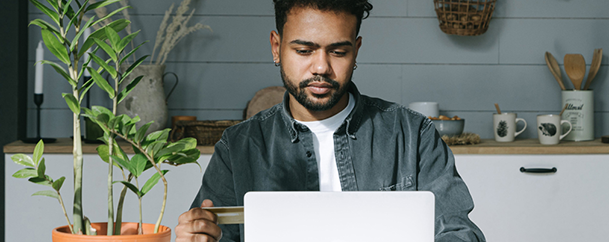An Inside Look at the Hispanic Beauty Journey
Today’s beauty campaigns encourage consumers to embrace diverse beauty standards and think beyond stereotypes. As the U.S. Hispanic population grows, it’s important to note key differences and similarities between Hispanic and non-Hispanic consumers. To tease out the nuances of culture as it relates to beauty, we asked the women on our consumer panel about their shopping habits, product usage, and influencers in the category.
After comparing their responses to a non-Hispanic sample, several things emerged:
It all Starts at the Same Time
Latinas and non-Hispanics begin using beauty products at similar ages. Makeup is phased in, early in high school (age 15), while fragrances pop up slightly earlier, around 14. Across ethnicities, beauty is a journey rather than a finite occasion; the majority said they phased in products at various times, starting with lipstick and lip gloss.
Different Approaches to Beauty
When asked their main reasons for using makeup, roughly 40% of Latinas say they wear it to look put-together, while non-Hispanics say they want to cover up flaws (32%) and highlight natural features (32%). These motivations lead to different choices. Latinas are generally more likely to use skin care, cosmetics, and fragrance products. In terms of cosmetics, they’ree more likely to use visible products like lip gloss and lipstick. Non-Hispanics are more likely to use subtle things like concealer and foundation, which aim to cover flaws.
Open to Discovery
Sixty-two percent of Latinas say they like to try new and different brands, compared to 44% of non-Hispanics. This open mindset affects their pre-store behaviors, as many look for inspiration before they shop. In fact, over 60% say they plan out their beauty purchases before store visits, which means it’s important for brands to intercept them via their main influencers.
Family and friends are key influences across ethnicities, so word-of-mouth is a powerful, grassroots way to nudge consumers to try new brands. Latinas also turn to digital at a higher rate: YouTube (32%), beauty blogs (31%), beauty review pages (30%), Facebook (27%), and beauty review videos (23%). Offline, they consult magazine ads (34%), mainstream magazines (26%), and ethnic/Latina magazines (23%).
Willingness to Pay for Quality
We’d be remiss to say that price has no impact. Roughly one in four Hispanic women say that price is the most important factor, and 57% say that they are budget-conscious when shopping for beauty products. Unacculturated consumers tend to be more budget-conscious, which is likely tied to their lower household incomes on average.
Regardless of acculturation, note that price is less important to Latinas than it is to their non-Hispanic counterparts. Over a third of non-Hispanics say price is the most important factor, and 62% say they are budget-conscious. Hispanic women show a greater willingness to pay a premium and are more likely to say that a higher price indicates better quality.
What does it all mean for beauty brands?
Since these consumers are open to new products and brands, it’s important for companies to be present in their sources for inspiration, particularly online and magazines. Presence in these channels will encourage Hispanics to put a particular brand on their list.
Brands must also ensure that they are findable in the store. Carefully consider shopper decisions and offer in-language experiences when possible.
Learn More
Already a client? Access the full study: Beauty Behaviors: How to Win with Product and Effectively Leverage Influencers
The full study provides marketers detailed insights and learnings around beauty influencers, general beauty behaviors, category-specific behaviors (skin care, makeup, fragrance, hair care), and in-store behaviors.
Please complete the form below to receive additional information from Collage Group.
Stay Informed
Email *:
MARKET RESEARCH
SOLUTIONS
fluen.ci App for Cultural Insights
Consumer Research Data & Tools
RESOURCES
Webinar & Events
ABOUT
Who We Are
Collage Group is a certified Minority Business Enterprise (MBE) by the National Minority Supplier Development Council (NMSDC).
©2023 Collage Group

4550 Montgomery Avenue
Bethesda, Maryland, 20814
(240) 482-8260
Stay Informed
Email *:


Collage Group is a certified Minority Business Enterprise (MBE) by the National Minority Supplier Development Council (NMSDC).
©2023 Collage Group



